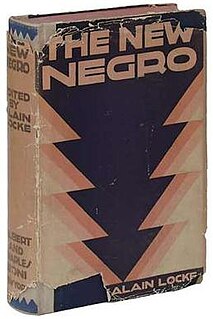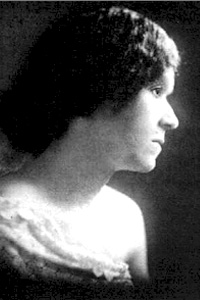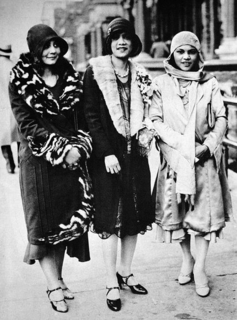
James Weldon Johnson was an American writer and civil rights activist. He was married to civil rights activist Grace Nail Johnson. Johnson was a leader of the National Association for the Advancement of Colored People (NAACP), where he started working in 1917. In 1920, he was the first African American to be chosen as executive secretary of the organization, effectively the operating officer. He served in that position from 1920 to 1930. Johnson established his reputation as a writer, and was known during the Harlem Renaissance for his poems, novel, and anthologies collecting both poems and spirituals of black culture. He wrote the lyrics for "Lift Every Voice and Sing", which later became known as the Negro National Anthem.

Festus Claudius "Claude" McKay OJ was a Jamaican-American writer and poet, and a central figure in the Harlem Renaissance.

Countee Cullen was an American poet, novelist, children's writer, and playwright, particularly well known during the Harlem Renaissance.

Arna Wendell Bontemps was an American poet, novelist and librarian, and a noted member of the Harlem Renaissance.

Gwendolyn B. Bennett was an American artist, writer, and journalist who contributed to Opportunity: A Journal of Negro Life, which chronicled cultural advancements during the Harlem Renaissance. Though often overlooked, she herself made considerable accomplishments in art, poetry, and prose. She is perhaps best known for her short story "Wedding Day", which was published in the magazine Fire!! and explores how gender, race, and class dynamics shape an interracial relationship. Bennett was a dedicated and self-preserving woman, respectfully known for being a strong influencer of African-American women rights during the Harlem Renaissance. Throughout her dedication and perseverance, Bennett raised the bar when it came to women's literature and education. One of her contributions to the Harlem Renaissance was her literary acclaimed short novel Poets Evening; it helped the understanding within the African-American communities, resulting in many African Americans coming to terms with identifying and accepting themselves.

The New Negro: An Interpretation (1925) is an anthology of fiction, poetry, and essays on African and African-American art and literature edited by Alain Locke, who lived in Washington, DC, and taught at Howard University during the Harlem Renaissance. As a collection of the creative efforts coming out of the burgeoning New Negro Movement or Harlem Renaissance, the book is considered by literary scholars and critics to be the definitive text of the movement. "The Negro Renaissance" included Locke's title essay "The New Negro," as well as nonfiction essays, poetry, and fiction by writers including Countee Cullen, Langston Hughes, Zora Neale Hurston, Claude McKay, Jean Toomer, and Eric Walrond.

Georgia Blanche Douglas Camp Johnson, better known as Georgia Douglas Johnson, was an African-American poet, one of the earliest African-American female playwrights, and an important figure of the Harlem Renaissance.

Anne Bethel Spencer was an American poet, teacher, civil rights activist, librarian, and gardener. While a librarian at the all-black Dunbar High School, a position she held for 20 years, she supplemented the original three books by bringing others from her own collection at home. Though she lived outside New York City, the recognized center of the Harlem Renaissance, also known as the New Negro Movement, she was an important member of this group of intellectuals. She met Edward Spencer while attending Virginia Seminary in Lynchburg, Virginia. Following their marriage in 1901, the couple moved into a house he built at 1313 Pierce Street, where they raised a family and lived for the remainder of their lives.

The Harlem Renaissance was an intellectual and cultural revival of African American music, dance, art, fashion, literature, theater and politics centered in Harlem, Manhattan, New York City, spanning the 1920s and 1930s. At the time, it was known as the "New Negro Movement", named after The New Negro, a 1925 anthology edited by Alain Locke. The movement also included the new African American cultural expressions across the urban areas in the Northeast and Midwest United States affected by a renewed militancy in the general struggle for civil rights, combined with the Great Migration of African American workers fleeing the racist conditions of the Jim Crow Deep South, as Harlem was the final destination of the largest number of those who migrated north.

William Stanley Beaumont Braithwaite was an African-American writer, poet, literary critic, anthologist, and publisher. His work as a critic and anthologist was widely praised and important in the development of East Coast poetry styles in the early 20th century.

Fenton Johnson was an American poet, essayist, author of short stories, editor, and educator. Johnson came from a middle-class African-American family in Chicago, where he spent most his career. His work is often included in anthologies of 20th-century poetry, and he is noted for early prose poetry. Author James Weldon Johnson called Fenton, "one of the first Negro revolutionary poets”. He is also considered a forerunner of the Harlem Renaissance.
Lewis Grandison Alexander was an American poet, actor, playwright, and costume designer who lived in Washington, D.C. and had strong ties to the Harlem Renaissance period in New York. Alexander focused most of his time and creativity on poetry, and it is for this that he is best known.

Esther Popel was an African-American poet of the Harlem Renaissance and an activist and educator. She wrote and edited for magazines such as The Crisis, the Journal of Negro Education, and Opportunity.
Clara Ann Thompson (1869-1959) was an African-American poet, teacher and civil rights advocate. Thompson was born in Rossmoyne, Ohio. Thompson's parents, John Henry and Clara Jane Gray Thompson, were previously enslaved in Virginia.
Caroling Dusk: An Anthology of Verse by Black Poets of the Twenties: Anthology of Black Verse is a 1927 poetry anthology that was edited by Countee Cullen. It has been republished at least three times, in 1955, 1974, and 1995 and included works by thirty-eight African-American poets, including Paul Laurence Dunbar, Langston Hughes, Georgia Douglas Johnson, James Weldon Johnson, and Claude McKay. The anthology also includes biographical sketches of the poets whose work is included in the book.
The Book of American Negro Poetry is a 1922 poetry anthology that was compiled by James Weldon Johnson. The first edition, published in 1922, was "the first of its kind ever published" and included the works of thirty-one poets. A second edition was released in 1931 with works by nine additional poets.

Anita Scott Coleman was an American writer born in Mexico and raised in New Mexico.
An Anthology of Verse by American Negroes is a 1924 poetry anthology compiled by Newman Ivey White and Walter Clinton Jackson. The anthology is considered one of the major anthologies of black poetry to be published during the Harlem Renaissance, and was republished in 1969. In reviews, the anthology has been positively received for the effort it made to compile poetry, but criticized for ambiguous criticism and poor selection of poems.

Robert Thomas Kerlin was an American educator, minister, and civil rights activist. He authored several books and edited the 1920 anthology The Voice of the Negro and the 1923 poetry anthology Negro Poets and Their Poems. Kerlin taught English at several schools, and was fired from three in a row for his activism.
The Voice of the Negro: 1919 is a collection of excerpts from African-American newspapers in 1919 that was collected and published by Robert T. Kerlin in 1920.














